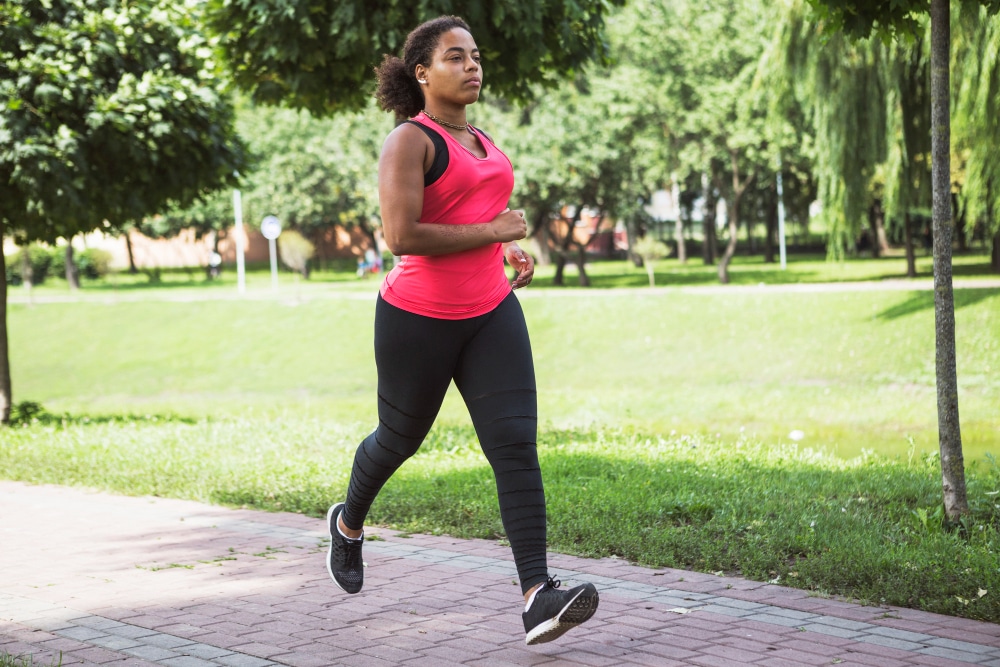Enhance your routine with walking if you’re looking to shed extra pounds. It stands as an undervalued yet highly effective method for weight loss and exercise. With its simplicity and accessibility, walking proves to be free from high injury risks and suitable for virtually everyone. Within this article, you’ll uncover the duration required to complete a 10 miles walk, along with comprehensive answers to frequently raised queries.
On average, covering a 10-mile distance takes an individual between 2 hours 30 minutes and 3 hours 20 minutes. This translates to a walking speed spanning 3 to 4 miles per hour. The final time will vary due to influential factors like age, gender, fitness level, and terrain.
The standard walking pace falls within the range of 15:00 to 20:00 minutes per mile. These insights stem from research conducted by Schimpl et al., providing a strong foundation for the information presented here.
Beyond doubt, walking exerts profound positive impacts on both your physical and mental well-being. Yet, the question arises: is embarking on a 10-mile walk each day a viable choice? Is it truly worth the effort, and how should you approach it? You Should Read Walking 2 Miles: How Long Does It Take?
How Long Does It Take To Walk 10 Miles Based on Gender?
For women aged 30 to 39, the average time to complete a 10-mile walk is 3 hours 20 minutes. This suggests an average walking speed of 3.00 miles per hour, accompanied by a standard pace of 20:00 minutes per mile.
In the case of men aged 30 to 39, the average time taken to traverse 10 miles stands at 3 hours 7 minutes 30 seconds. This yields an average walking speed of 3.20 miles per hour, coupled with an average pace of 18:45 minutes per mile.
Is Walking 10 Miles Really Beneficial For Wellbieng?
In the realm of good health, embracing the challenge of a daily 10-mile walk yields predominantly positive outcomes. Notable benefits include substantial calorie expenditure, heightened strength in leg and core muscles, as well as improved cardiovascular fitness.
The prospect of covering 10 miles each day might seem formidable at first glance. However, your body will gradually acclimate as you accrue more walking experience. Nonetheless, before embarking on such a journey, several factors necessitate consideration.
For those carrying excess weight, daily 10-mile walks may pose a risk to foot health. Individuals with a history of ankle or knee weaknesses due to prior injuries, or those exhibiting abnormal walking patterns, might encounter tissue damage or inflammation from such extensive walking. Another Must Read Article: 10 Exercises & 5 Tips To Get Jiggly Butt.
Can Walking 10 Miles Daily Aid Weight Loss?
Engaging in a 10-mile daily walk constitutes an exceptional exercise for shedding surplus weight. Scientific findings indicate that a pound of fat corresponds to 3,500 calories.
Assuming a 10-mile walk burns around 1000 calories, a weekly weight loss of slightly over one pound is achievable if walking on weekdays and reserving weekends. However, managing calorie intake is essential to prevent compensatory overeating.
As your weight loss journey unfolds, your body undergoes hormonal adjustments that might lead to non-linear progress. Achieving successful weight loss involves harmonizing walking with dietary modifications for optimal results.
Calculating Caloric Expenditure During a 10-Mile Walk
Anticipate a caloric expenditure ranging from 700 to 1,200 calories after completing a 10-mile walk, though this figure hinges on multiple factors. Among these factors, your body weight is the predominant influencer impacting the calories burned during walking.
For instance, an individual weighing 155 pounds, walking at a pace of 4mph, expends 351 calories per hour. In comparison, a person weighing 185 pounds would burn 419 calories an hour at the same pace. Over the course of a 10-mile walk, the 155-pound individual would expend 878 calories, while the 185-pound individual would expend 1,048 calories.
It’s noteworthy that the pace doesn’t significantly alter the calories expended during walking, yet it does impact the duration of your walk.
Advantages of Walking 10 Miles Daily
Beyond the simplicity of walking, this activity boasts an array of additional benefits that profoundly enhance both your mental and physical well-being. Notably, it aids in weight management and enhances muscle endurance. Presented below are the advantages of embarking on a 10-mile daily walk.
Benefit #1: Weight Management
Walking effectively elevates your daily caloric expenditure. This heightened calorie consumption facilitates weight loss. The extent of weight reduction through walking is contingent upon your body weight, walking speed, and underlying medical conditions.
Research indicates that moderately-weighted women achieved a weight loss of at least 10% of their initial body weight after engaging in brisk daily walks over a span of six months.
It’s important to acknowledge that while walking aids weight loss, it becomes even more potent when coupled with a low-calorie diet. As individuals curtail their calorie intake to shed weight, there’s a concurrent loss of muscle alongside body fat. To understand how to shed fat without sacrificing muscle mass, you can explore more here.
Preserving lean muscle mass during weight loss is crucial, given that muscles possess a higher metabolic activity compared to fat. Walking actively safeguards this lean muscle mass, facilitating the maintenance of positive outcomes.
Additionally, regular physical activity combats age-related muscle loss, enabling the retention of muscle strength as the years progress. A 10-mile daily walk specifically reinforces the muscles in the calves, hips, and hamstrings.
Moreover, the accumulation of visceral fat around the midsection corresponds to heightened risks of diabetes and heart disease. Engaging in aerobic exercises, like walking, proves highly effective in reducing belly fat.
Benefit #2: Enhanced Mental Well-being
A brisk walk exerts a transformative impact on your mental state. It contributes to improved mood, enhanced sleep quality, elevated self-perception, and reduced levels of anxiety and fatigue.
The combination of walking and immersing oneself in nature yields psychological benefits. This practice enables a departure from routine settings, allowing for decompression and refocusing.
Moreover, walking amidst greenery or natural surroundings correlates with diminished anxiety and depression levels. This proves particularly advantageous during periods of heightened seasonal depression experienced in colder months.
Research further indicates that engaging in activities fostering mind-wandering enhances creativity levels. This practice fortifies memory and safeguards against the degradation of brain tissue that accompanies aging.
Benefit #3: Blood Pressure and Blood Sugar Regulation
Walking a few miles each day constitutes a potent strategy for lowering blood glucose levels. As you engage in walking, your muscles actively utilize glucose. Consequently, the heightened glucose consumption leads to decreased blood sugar levels, thereby enhancing insulin sensitivity.
Muscle mass holds paramount importance in blood sugar management. Greater muscle mass equates to heightened capacity for glucose absorption from the bloodstream. Thus, preserving muscle mass translates to more insulin receptors and improved blood sugar control.
Given that abdominal fat plays a pivotal role in fostering insulin resistance, walking contributes to its reduction, facilitating weight loss that, in turn, bolsters blood sugar management.
Moreover, adopting a drug-free approach, walking 10 miles daily serves as an effective means to regulate blood pressure. Studies reveal that individuals with hypertension achieved significant reductions in blood pressure by engaging in a minimum of 15 minutes of daily walking over a six-month period.
Benefit #4: Cardiovascular Health Enhancement
During a walking regimen, the muscles intensify their demand for oxygen and nutrients, consequently prompting the heart to function more efficiently in pumping blood.
This heightened cardiovascular efficiency, in turn, mitigates the strain on arteries, contributing to a lowered risk of cardiovascular disease.
Challenges Associated with Walking 10 Miles
Undoubtedly, reaping the rewards of a 10-mile daily walk brings forth numerous advantages. However, it’s imperative to acknowledge certain drawbacks before fully committing to this endeavor.
Challenge #1: Time Commitment
The pursuit of a 10-mile daily walk entails a significant time investment. Considering an average walking speed of 3 to 4mph, covering this distance requires 2 to 3 hours. If you maintain a pace faster than this range, you’re essentially transitioning into jogging territory.
Allocating three hours for daily walking might prove impractical, particularly for individuals with busy schedules. Yet, this time can be made enjoyable by listening to music, podcasts, or relishing the outdoor scenery, if circumstances permit.
For those seeking to minimize the time investment, aiming to walk 5 miles or achieve a step count of 12,000 per day could serve as a feasible alternative, particularly for weight loss goals.
Challenge #2: Moderate-Intensity Aspect
Experts advocate a minimum of 150 minutes of moderate-intensity exercise to enhance aerobic fitness and strength. Engaging in activities like swimming, cycling, or running can fulfill this recommendation.
One shortcoming of walking lies in its relatively modest intensity. While walking certainly provides initial gains in aerobic fitness, the body eventually plateaus in terms of progress.
To amplify exercise efficiency and intensity, contemplate integrating running or incorporating weights into your walks, such as ankle weights that heighten the exertion required.
Challenge #3: Limited Strength Training Benefits
Although walking effectively supports weight loss, it lacks the comprehensive benefits conferred by weight training. The holistic development of physical fitness necessitates strength or resistance training to enhance bone density and muscle mass.
The preservation of bone and muscle mass assumes particular significance, especially among older adults. While walking surpasses a sedentary lifestyle in terms of health benefits, it falls short of fulfilling the prerequisites for fortifying bones and building muscle mass.
Furthermore, to mitigate the risk of falls during walking, it’s essential to incorporate coordination and balance training into your fitness regimen.
Comparing Walking 10 Miles in 70 Minutes to 90 Minutes: Which is More Effective?
Achieving a 10-mile walk in 70 minutes requires maintaining a pace of 4.29 miles per hour (6.9 kilometers per hour) or completing each mile in about 14 minutes.
Attaining such speed might seem challenging, especially for non-avid walkers. This pace significantly exceeds what most individuals are accustomed to.
Alternatively, completing a 10-mile walk in 90 minutes necessitates maintaining a pace of 3.33 miles per hour (5.36 kilometers per hour) or completing each mile in about 18 minutes.
For the majority, this represents a more manageable and moderate walking speed.
Is Walking 10 Miles Effective for Belly Fat Loss?
Walking 10 miles can contribute to belly fat loss; however, it’s pivotal to recognize that this isn’t a standalone solution. Successful weight loss requires a combination of regular exercise and a balanced diet.
Embracing walking as a low-impact aerobic activity can aid in weight loss, stress management, and cardiovascular strengthening.
Initiating weight loss, potentially leading to belly fat reduction, involves establishing a calorie deficit—burning more calories than consumed.
Furthermore, incorporating variations in walking pace or uphill walking can enhance the impact of your walking regimen.
How Many Steps are Needed for a 10-Mile Walk?
Walking 10 miles typically translates to approximately 21,000 steps. Accurate step calculations consider various variables such as gender, height, weight, stride length, and walking or running pace.
Notably, a shorter individual would need more steps to cover the same distance compared to a taller counterpart.
How To Prepare For Walking 10 Miles?
While walking serves as an excellent mental refresher, monotony can set in, especially if the same route is taken repeatedly.
To inject excitement into a 10-mile walk, consider the following strategies:
- Alter Your Route: Opt for a different path or explore new surroundings. Changing the scenery can rekindle interest.
- Tune In: Listen to music or engaging podcasts. Crafting a playlist or finding captivating content can make the journey more stimulating.
- Companionship Counts: Walk alongside a friend. Partnering up can provide motivation and transform your outing into a rewarding workout.
- Goal Setting: Challenge yourself by establishing distance objectives or aiming to beat your personal records. Accomplishments foster motivation.
- Appreciate Your Surroundings: Notice the subtle details of your environment. Unearth new aspects of familiar places.
- Utilize Tracking Tools: Employ pedometers or activity trackers to monitor steps and distance. Tracking progress fuels ongoing dedication.
- Blend in Strength Exercises: Integrate strength exercises into your walk, like squats, lunges, or push-ups. Enhance fitness while intensifying your walk.
Walking 10 miles holds immense potential for both physical and mental well-being. By adopting these strategies, you can make each journey not only effective but also captivating.
Final Thoughts
Achieving a 10-mile walk requires an investment of approximately 2 to 3 hours.
A typical walking pace hovers between 3 to 4 miles per hour, with surpassing this rate transitioning into running or jogging. Age, overall health, and fitness level collectively influence one’s walking speed.
Considerations such as trail conditions and incline also factor into the time needed for a 10-mile journey. Notably, individuals with shorter strides might extend their time to cover the distance.
For expedited weight loss, adopting a brisk pace proves most effective. Initially, don’t dwell on this aspect—simply relish the act of walking.
Economical and conveniently accessible, walking stands as an impactful mode of exercise boasting both physical and mental health advantages.
Engaging in a daily 10-mile walk significantly enhances psychological well-being. Yet, one must account for the required time, potential injury risks, and monotony.
Adequate preparation is paramount before committing to this daily regimen. Opt for appropriate attire and seek picturesque paths to minimize injury risks and maintain workout consistency.
Strike a balance, allowing for rest days to prevent overexertion. Whether amplifying your fitness routine or pursuing weight loss, walking serves as a splendid avenue for overall life enhancement.
Resorces
- Schimpl M, Moore C, Lederer C, Neuhaus A, Sambrook J, Danesh J, Ouwehand W, Daumer M. Association between walking speed and age in healthy, free-living individuals using mobile accelerometry–a cross-sectional study. PLoS One. 2011;6(8):e23299. doi: 10.1371/journal.pone.0023299. Epub 2011 Aug 10. PMID: 21853107; PMCID: PMC3154324.
- Gwinup G. Weight loss without dietary restriction: efficacy of different forms of aerobic exercise. Am J Sports Med. 1987 May-Jun;15(3):275-9. doi: 10.1177/036354658701500317. PMID: 3618879.
- Henriksen D, Richardson C, Shack K. Mindfulness and creativity: Implications for thinking and learning. Think Skills Creat. 2020 Sep;37:100689. doi: 10.1016/j.tsc.2020.100689. Epub 2020 Aug 1. PMID: 32834868; PMCID: PMC7395604.
- Lee LL, Mulvaney CA, Wong YKY, Chan ES, Watson MC, Lin HH. Walking for hypertension. Cochrane Database Syst Rev. 2021 Feb 24;2(2):CD008823. doi: 10.1002/14651858.CD008823.pub2. PMID: 33630309; PMCID: PMC8128358.



